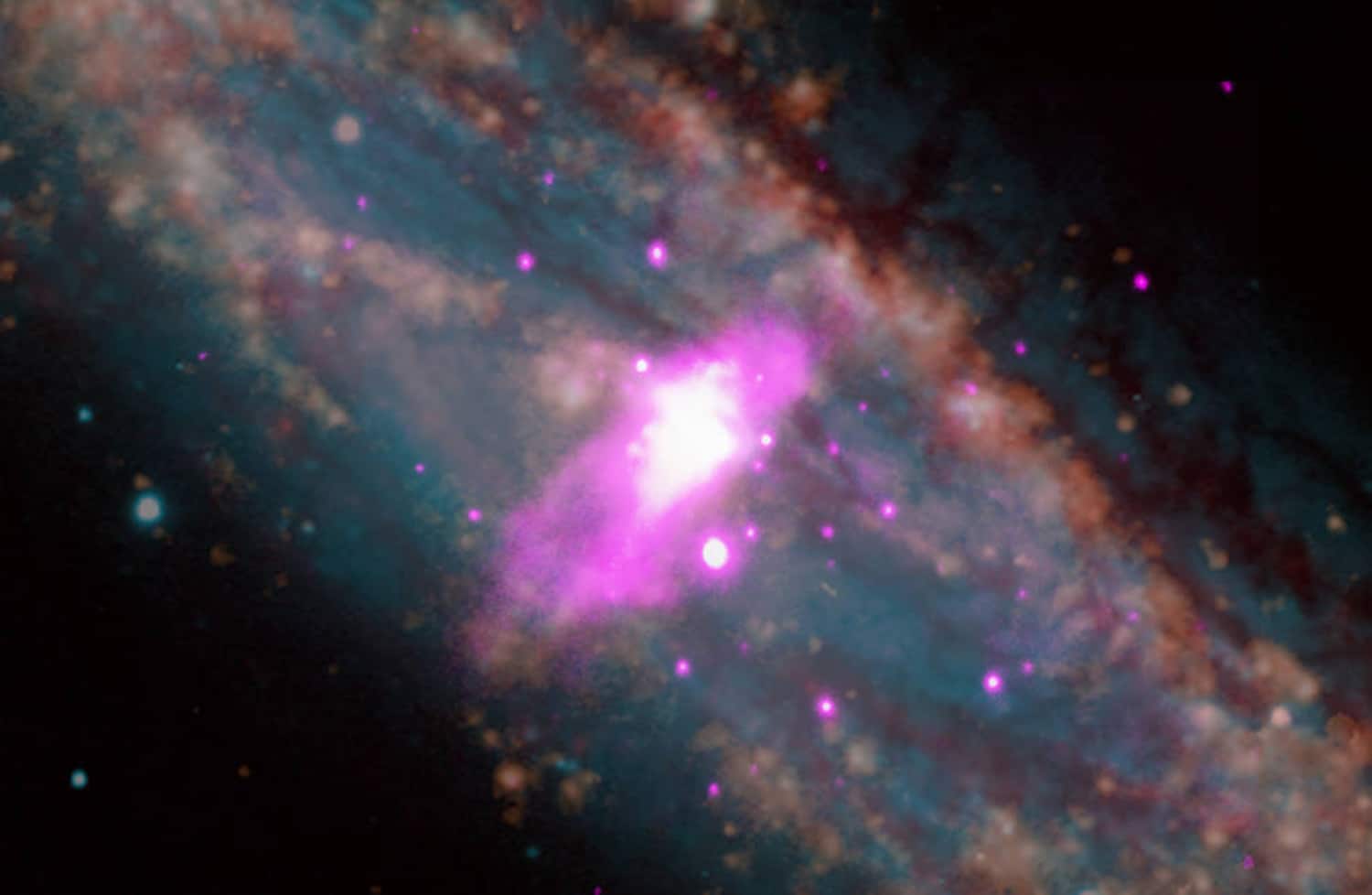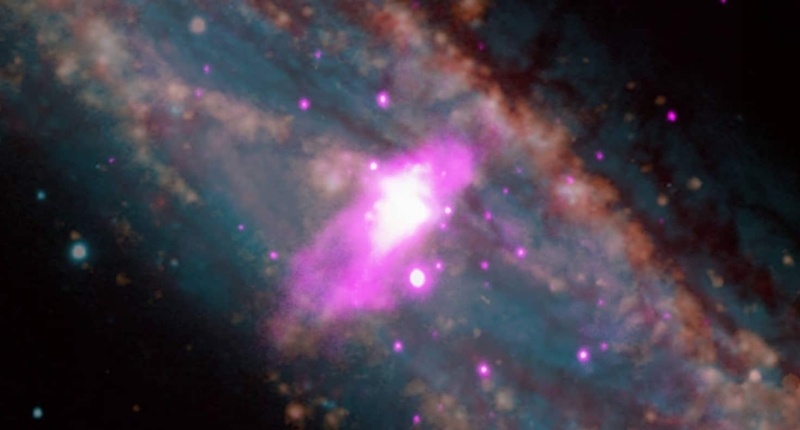A team led by Sebastian Lopez from The Ohio State University used deep Chandra observations to study wind properties in NGC 253. They found that the densities and temperatures of the gas in the wind are the highest in regions less than about 800 light-years from the center of the galaxy, decreasing with distance farther away. Recent theoretical studies propose that a ring of “super star clusters” situated close to the center of NGC 253 should instead produce a more focused wind, and the focused nature of the wind observed by the team supports this assumption. However, the lack of agreement between theory and data raises the possibility that the theory is deficient in some physics concepts.
Scientists believe that the wind plow effect may be the extra physics required to produce a better agreement between theory and observations. The team also studied the composition of the wind and found that these elements become much more diluted farther away from the galaxy’s center. These findings provide valuable insights into the properties of galactic winds, and future observations of other galaxies with winds will help astronomers understand whether the difference in element distribution is related to the general properties of the galaxies, such as the total mass of the stars they contain.
Understanding the Power of Galactic Winds from NGC 253

Galactic winds are crucial to their host galaxies as they have a significant impact on altering the metal content of the disk, circumgalactic medium, and intergalactic medium. NGC 253, a nearby edge-on starburst galaxy located almost 11.4 million light-years from Earth, has a multiphase outflow that has been well-studied across the electromagnetic spectrum.
A new study using NASA’s Chandra X-ray Observatory has shown the effects of powerful winds launched from the center of NGC 253. The galaxy’s wind is composed of gas with temperatures of millions of degrees that glows in X-rays. This wind is so powerful that an amount of hot gas equivalent to about two million Earth masses blows away from the galaxy’s center yearly.
The star formation rate in NGC 253 is two to three times faster than the Milky Way, and this starburst galaxy has massive young stars generating wind by ferociously blowing gas from their surfaces. The galaxy unleashes even more powerful winds when these young stars later explode as supernovae.
Astronomers have gained insight into the critical stage of the star life cycle through NGC 253. Materials generated inside the young stars enrich the material they project hundreds of light-years into intergalactic space, where many of these elements, essential to life on Earth, are incorporated into upcoming stars and planets.
Chandra data shows how these winds sweep away from the galaxy’s center in two opposed directions. In the inset, Chandra data is shown in pink and white, alongside infrared data from NASA’s Spitzer Space Telescope, visible light data from a 0.9-meter telescope at Kitt Peak Observatory, and hydrogen emission data (red). Furthermore, the broader image in the graphic, which displays an optical image from the European Southern Observatory’s La Silla Observatory in Chile, shows how NGC 253 appears almost edge-on from Earth’s point.
Overall, NGC 253 is an essential source of information for astronomers, and the new study has shown the power and effects of galactic winds launched from its center.
Understanding Wind Properties in NGC 253 through Deep Chandra Observations
A team led by Sebastian Lopez from The Ohio State University used deep Chandra observations to study wind properties in NGC 253. They found that the densities and temperatures of the gas in the wind are the highest in regions less than about 800 light-years from the center of the galaxy, decreasing with distance farther away. This finding conflicts with an early theory that suggested spherical winds in starburst galaxies like NGC 253.
Recent theoretical studies propose that a ring of “super star clusters” situated close to the center of NGC 253 should instead produce a more focused wind. This assumption is supported by the focused nature of the wind observed by the team, suggesting that superstar clusters are a significant wind source. However, the lack of agreement between theory and data raises the possibility that the theory is deficient in some physics concepts. Scientists believe that the wind plow effect may be the extra physics required to produce a better agreement between theory and observations.
The team also studied the composition of the wind, specifically elements like oxygen, neon, magnesium, silicon, sulfur, and iron. They found that these elements become much more diluted farther away from the galaxy’s center, and astronomers did not observe such a rapid decrease in the amounts of these elements in the wind from another well-studied galaxy undergoing a burst of star formation, M82.
These findings provide valuable insights into the properties of galactic winds, and future observations of other galaxies with winds will help astronomers understand whether the difference in element distribution is related to the general properties of the galaxies, such as the total mass of the stars they contain.
Don’t miss interesting posts on Famousbio









